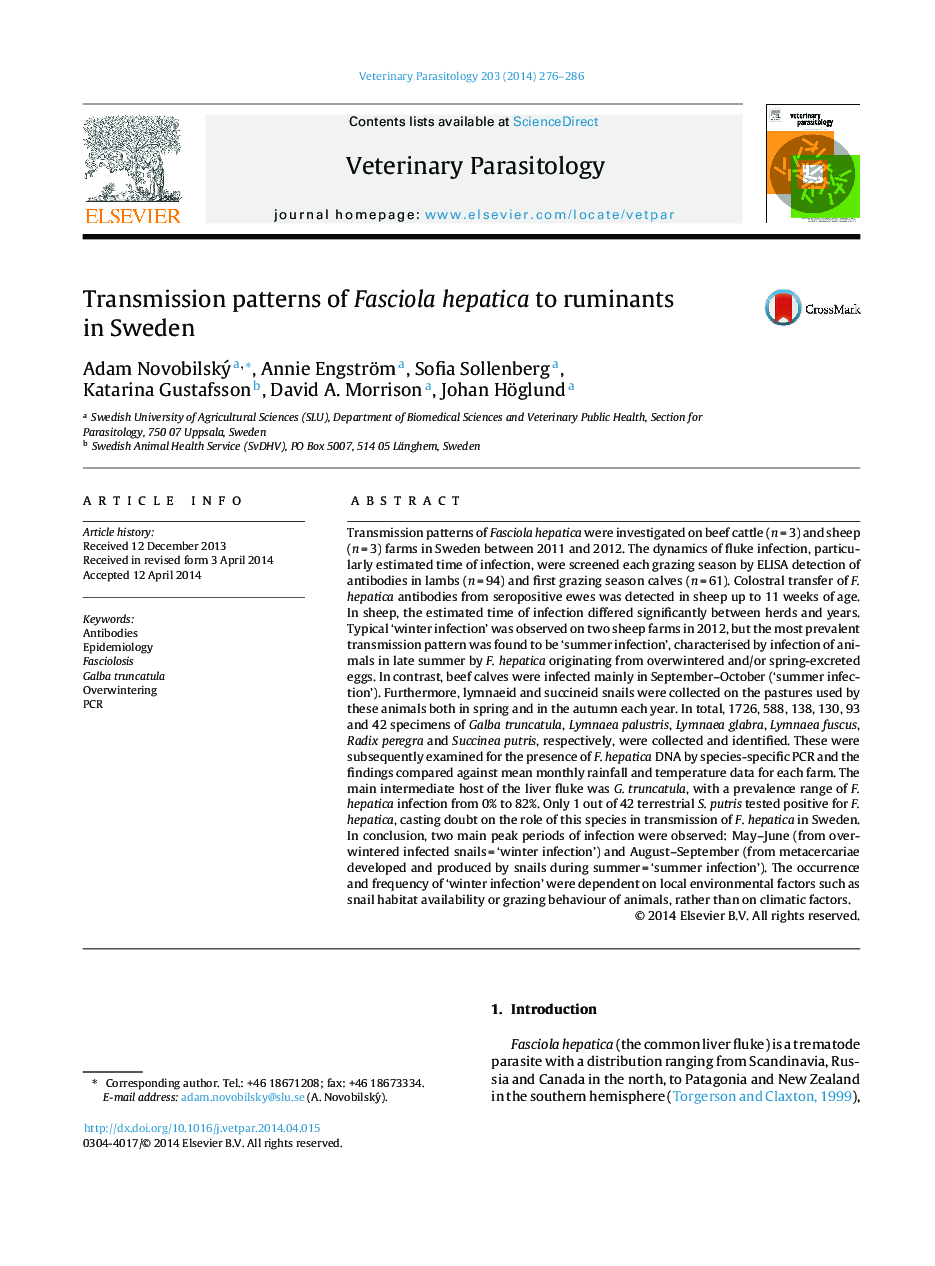| کد مقاله | کد نشریه | سال انتشار | مقاله انگلیسی | نسخه تمام متن |
|---|---|---|---|---|
| 5802897 | 1555684 | 2014 | 11 صفحه PDF | دانلود رایگان |

Transmission patterns of Fasciola hepatica were investigated on beef cattle (n = 3) and sheep (n = 3) farms in Sweden between 2011 and 2012. The dynamics of fluke infection, particularly estimated time of infection, were screened each grazing season by ELISA detection of antibodies in lambs (n = 94) and first grazing season calves (n = 61). Colostral transfer of F. hepatica antibodies from seropositive ewes was detected in sheep up to 11 weeks of age. In sheep, the estimated time of infection differed significantly between herds and years. Typical 'winter infection' was observed on two sheep farms in 2012, but the most prevalent transmission pattern was found to be 'summer infection', characterised by infection of animals in late summer by F. hepatica originating from overwintered and/or spring-excreted eggs. In contrast, beef calves were infected mainly in September-October ('summer infection'). Furthermore, lymnaeid and succineid snails were collected on the pastures used by these animals both in spring and in the autumn each year. In total, 1726, 588, 138, 130, 93 and 42 specimens of Galba truncatula, Lymnaea palustris, Lymnaea glabra, Lymnaea fuscus, Radix peregra and Succinea putris, respectively, were collected and identified. These were subsequently examined for the presence of F. hepatica DNA by species-specific PCR and the findings compared against mean monthly rainfall and temperature data for each farm. The main intermediate host of the liver fluke was G. truncatula, with a prevalence range of F. hepatica infection from 0% to 82%. Only 1 out of 42 terrestrial S. putris tested positive for F. hepatica, casting doubt on the role of this species in transmission of F. hepatica in Sweden. In conclusion, two main peak periods of infection were observed: May-June (from overwintered infected snails = 'winter infection') and August-September (from metacercariae developed and produced by snails during summer = 'summer infection'). The occurrence and frequency of 'winter infection' were dependent on local environmental factors such as snail habitat availability or grazing behaviour of animals, rather than on climatic factors.
Journal: Veterinary Parasitology - Volume 203, Issues 3â4, 14 July 2014, Pages 276-286